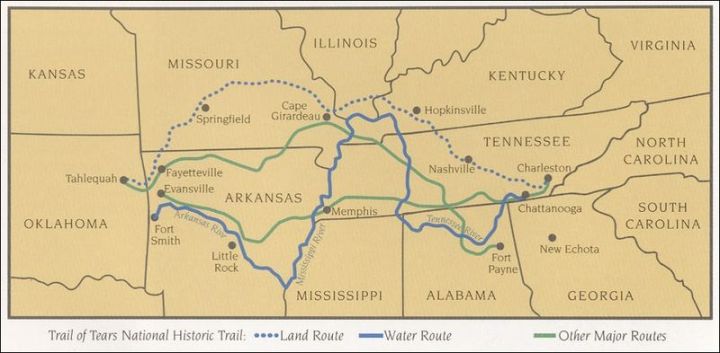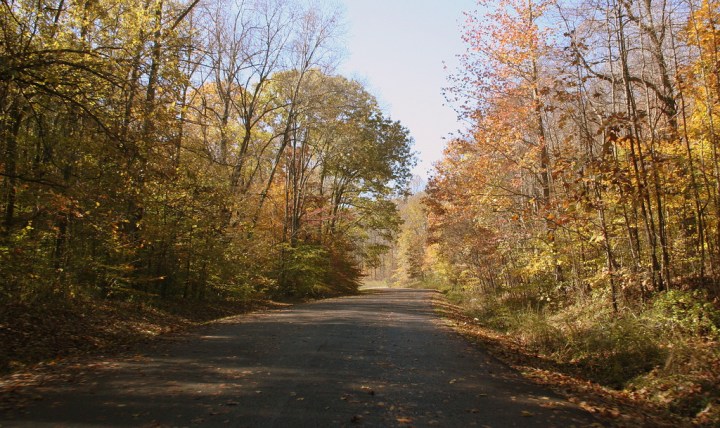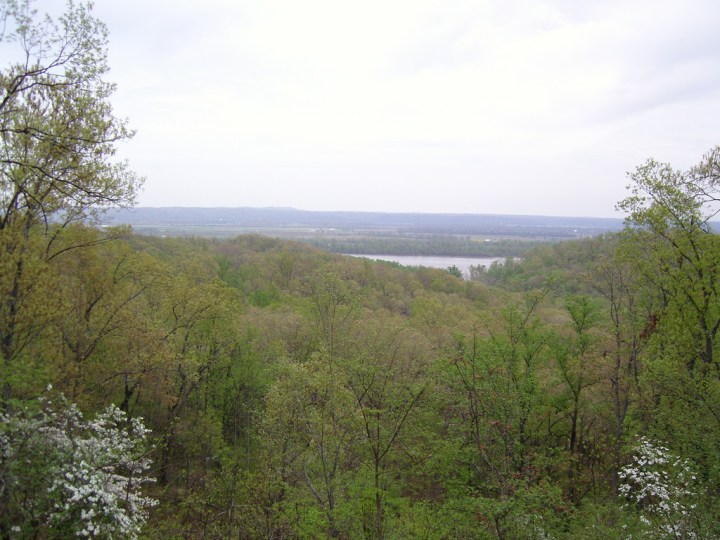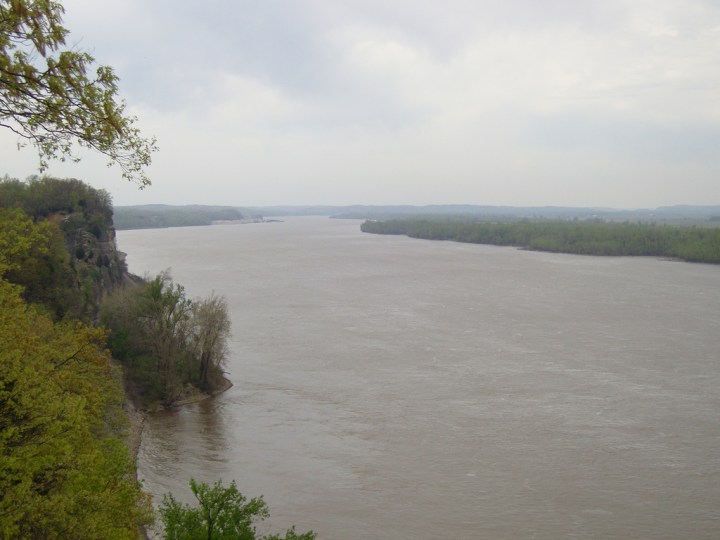Take A Hike At This One Missouri State Park For An Unforgettable Experience
In the winter of 1838 and 1839, thirteen Cherokee Indian groups were relocated to Oklahoma. This trek in harsh winter conditions became known as the “Trail of Tears.” Nine of these groups crossed the Mississippi River at what would become Missouri’s Trail of Tears State Park.

With four different trails of varying difficulty, this area can be explored and these sad souls honored. Begin at the park’s visitor center and learn the tale of the thousands who died on the forced march. The interpretive center features exhibits about the Trail of Tears as well as displays and specimens of local wildlife.

Follow the Nature Trail, a moderate 0.6-mile hike that starts up the ridge behind the visitor center. Wildlife such as white-tailed deer, cottontail rabbits, and box turtles have been spotted on this trail, as well as lots of beautiful tulip poplar and pawpaw trees. The pawpaw, also known as the Missouri banana tree, blooms with small dark flowers in late winter/early spring, and bears green oblong fruits in the fall. In addition, wildflowers and large areas of ferns are abundant in spring.
For a slightly more challenging hike, consider the Lake Trail. The beautifully picturesque Lake Trail winds along the shoreline of Lake Boutin and loops around the basic campground, all while crossing valleys and ridges. It is a more rugged trail of about 2.25 miles. Along the way, you will find remnants of old homesteads with clearings, old roadbeds, a man-made pond and barbed wire fencing fragments winding through trees. You can even see evidence of tulip poplar rows that were planted in the 1960s in an effort to reforest old farm fields. Early in the spring you can find the rare plant, the pennywort.
For a slightly more challenging hike, consider the Lake Trail. The beautifully picturesque Lake Trail winds along the shoreline of Lake Boutin and loops around the basic campground, all while crossing valleys and ridges. It is a more rugged trail of about 2.25 miles. Along the way, you will find remnants of old homesteads with clearings, old roadbeds, a man-made pond and barbed wire fencing fragments winding through trees. You can even see evidence of tulip poplar rows that were planted in the 1960s in an effort to reforest old farm fields. Early in the spring you can find the rare plant, the pennywort.
Advertisement

The rugged, 3-mile Sheppard Point Trail is located on the southeast end of the park. It features sharp ridges, steep ravines, and a distinctive, Appalachian-style forest. You will find American beech, cucumber magnolia and tulip poplar trees encompassing the hollows and valleys with oak and hickory trees lining the ridges. The trail rises to the top of a ridge and then heads toward the Mississippi River. The steep inclines provide impressive views from the ridge edges. After dropping off the ridge, the trail loops down to a valley and then back up a steep incline to Sheppard Point. It is at this spot on top of an impressive bluff overlooking the Mississippi River where you can often spot eagles in the winter.
The longest trail in the park is the rugged 9-mile Peewah Trail, which explores the Indian Creek Wild Area. One of the most rugged areas along the Mississippi River hills, Indian Creek covers 1,300 acres. A maze of ravines and side hollows, created by the Mississippi River, Indian Creek and other small tributaries cut into the surrounding loess-covered hills. A large variety of trees include white oak, tulip poplar and hickory covering the hills, and large sweet gums and willows enhabit the floodplain forests along Indian Creek. In the lowlands, discover jungle-like areas thick with wild grapevines.
The longest trail in the park is the rugged 9-mile Peewah Trail, which explores the Indian Creek Wild Area. One of the most rugged areas along the Mississippi River hills, Indian Creek covers 1,300 acres. A maze of ravines and side hollows, created by the Mississippi River, Indian Creek and other small tributaries cut into the surrounding loess-covered hills. A large variety of trees include white oak, tulip poplar and hickory covering the hills, and large sweet gums and willows enhabit the floodplain forests along Indian Creek. In the lowlands, discover jungle-like areas thick with wild grapevines.
Advertisement

The Peewah Trail allows its visitors to visit one of the most remote parts of the park, allowing for the privacy of an escape from the craziness of everyday life. Choose your path from two loops containing a short connector trail between them. The east loop navigates the ridges of the area and runs atop the bluffs overlooking the Mississippi River. A short offshoot leads to an overlook of the Mississippi River for a 1.5-mile round trip from the main trailhead. The west loop crosses several valleys and ridges and showcases a variety of forest types.
Overall, the length of the Peewah Trail, the two loops, and many side-shoots allow for the opportunity for a different experience at each visit. You might find yourself along the river, crossing creek beds, and climbing steep valleys. During heavy rain, parts of this trail can be flooded, so be aware and on the lookout for flash flooding and slippery spots.
Overall, the length of the Peewah Trail, the two loops, and many side-shoots allow for the opportunity for a different experience at each visit. You might find yourself along the river, crossing creek beds, and climbing steep valleys. During heavy rain, parts of this trail can be flooded, so be aware and on the lookout for flash flooding and slippery spots.

Whichever hike you choose, take time to remember and pay homage to the Cherokees while you are there. Imagine what traversing this wild land must have been like all after forced removal from their lands and time in internment camps the previous summer. Thousands died in the camps and in the compulsory trek across the wilderness.

The Trail of Tears is considered to be one of the most deplorable episodes in American history. To memorialize the event, the U.S. Congress designated the Trail of Tears National Historic Trail in 1987, which stretches across nine states for 2,200 miles.
Have you visited this park or hiked these trails? What was your experience? Share insights, stories, and comments below.
OnlyInYourState may earn compensation through affiliate links in this article. As an Amazon Associate, we earn from qualifying purchases.




